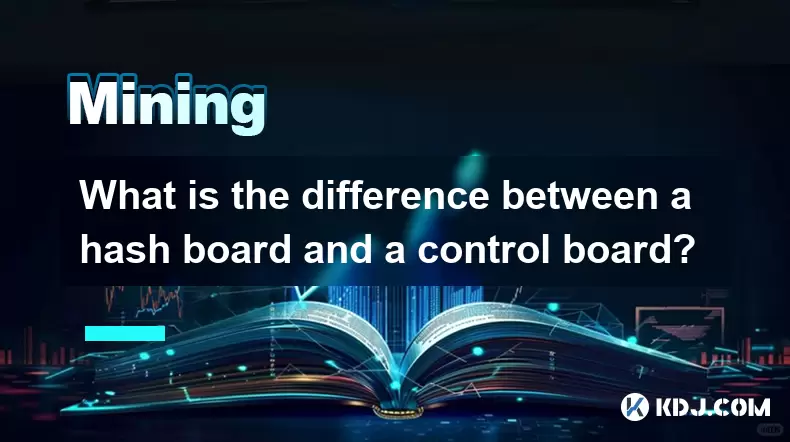-
 Bitcoin
Bitcoin $117,462.8204
-2.03% -
 Ethereum
Ethereum $3,061.1595
1.10% -
 XRP
XRP $2.9139
-2.19% -
 Tether USDt
Tether USDt $1.0002
0.02% -
 BNB
BNB $685.1357
-1.24% -
 Solana
Solana $161.3803
-2.11% -
 USDC
USDC $1.0002
0.04% -
 Dogecoin
Dogecoin $0.1948
-2.92% -
 TRON
TRON $0.2987
-0.89% -
 Cardano
Cardano $0.7330
-1.27% -
 Hyperliquid
Hyperliquid $47.7888
0.13% -
 Stellar
Stellar $0.4514
-2.93% -
 Sui
Sui $4.0169
2.74% -
 Chainlink
Chainlink $15.7088
-2.57% -
 Hedera
Hedera $0.2356
-3.33% -
 Bitcoin Cash
Bitcoin Cash $488.6656
-3.61% -
 Avalanche
Avalanche $21.2955
-1.47% -
 UNUS SED LEO
UNUS SED LEO $9.0415
0.42% -
 Shiba Inu
Shiba Inu $0.0...01332
-0.82% -
 Toncoin
Toncoin $3.0124
-0.62% -
 Litecoin
Litecoin $94.2175
-2.07% -
 Polkadot
Polkadot $4.0011
-0.61% -
 Monero
Monero $333.5714
-3.46% -
 Uniswap
Uniswap $9.1114
-1.56% -
 Dai
Dai $1.0000
0.02% -
 Ethena USDe
Ethena USDe $1.0005
0.00% -
 Bitget Token
Bitget Token $4.4951
1.87% -
 Pepe
Pepe $0.0...01242
0.47% -
 Aave
Aave $321.9943
0.51% -
 Bittensor
Bittensor $434.1984
5.13%
What is the difference between a hash board and a control board?
In cryptocurrency mining, hash boards perform computational tasks, while control boards manage communication and system coordination.
Jul 16, 2025 at 01:01 am

Understanding the Role of Hardware in Cryptocurrency Mining
In cryptocurrency mining, especially for Proof-of-Work (PoW) networks like Bitcoin, hardware plays a pivotal role in determining efficiency and profitability. Two key components found within mining rigs are the hash board and the control board. While both are essential, they serve different functions.
Hash boards are primarily responsible for performing the computational tasks required to solve cryptographic puzzles during mining. These boards contain Application-Specific Integrated Circuits (ASICs), which are designed specifically for hashing operations. On the other hand, control boards manage communication between the hash boards and the external network or mining software.
The distinction lies not only in their function but also in how they interact with each other and with the broader mining system. Understanding this difference is crucial for troubleshooting, optimizing performance, and upgrading mining hardware effectively.
What Is a Hash Board?
A hash board is one of the core components of an ASIC miner. It contains multiple ASIC chips that perform the SHA-256 hashing algorithms necessary for mining Bitcoin and similar cryptocurrencies.
- Each chip on the hash board contributes to the overall hashrate of the device.
- Hash boards typically operate in parallel, increasing processing power when more boards are installed.
- They generate significant heat due to high computational workloads and require efficient cooling systems.
In miners such as Bitmain’s Antminer series, you’ll find multiple hash boards connected together via flat cables. If one hash board fails or underperforms, it can significantly reduce the total hashrate and may trigger error messages on the control panel or mining dashboard.
What Is a Control Board?
The control board, sometimes referred to as the mainboard or motherboard, acts as the brain of the mining rig. It coordinates all internal and external communications.
- It connects to the hash boards and relays instructions from the mining pool or software.
- It handles internet connectivity, ensuring data synchronization between the miner and the blockchain network.
- It monitors the health of the hash boards and reports real-time statistics like temperature, fan speed, and hash rate.
If the control board malfunctions, the entire mining process could halt, even if all hash boards are functioning correctly. This makes it a critical component in maintaining continuous mining operations.
Differences Between Hash Boards and Control Boards
While both types of boards are indispensable in a mining setup, they differ significantly in purpose, structure, and impact on mining performance.
- Function: Hash boards compute hashes; control boards manage communication and coordination.
- Design: Hash boards are densely populated with ASIC chips and heat sinks; control boards have fewer chips but include ports for networking and power input.
- Failure Impact: A faulty hash board reduces hashrate; a failed control board stops the miner entirely.
- Upgradability: Some miners allow swapping hash boards for newer models; control boards are often fixed unless replaced entirely.
Understanding these differences helps users diagnose issues more accurately and make informed decisions about repairs, upgrades, or replacements.
Troubleshooting Common Issues Related to Hash and Control Boards
When a mining rig underperforms or stops working, identifying whether the issue stems from the hash board or the control board is essential.
- Check the mining software interface for error codes or warnings related to specific hash boards.
- Listen for unusual noises from fans or smell burning, which might indicate overheating or short circuits on the hash boards.
- Ensure the control board is receiving power and has a stable internet connection.
- Inspect physical connections between the hash boards and the control board for looseness or damage.
- Use diagnostic tools provided by the manufacturer to test individual board functionality.
Replacing a damaged hash board usually requires opening the casing and carefully disconnecting ribbon cables. Replacing a control board is more complex and may involve firmware reconfiguration or IP address resetting.
Frequently Asked Questions
Can I replace a hash board without replacing the control board?
Yes, hash boards can be replaced individually without affecting the control board. However, ensure compatibility with the existing model and firmware version.
Is it possible to upgrade the control board independently?
In most cases, control boards are proprietary and cannot be upgraded separately without voiding warranty or requiring technical expertise.
How do I know if my hash board is failing?
Common signs include reduced hashrate, frequent errors in mining logs, increased temperatures, or visible physical damage like burnt chips or bulging capacitors.
Why does my miner show no hashrate even though the control board seems fine?
This could be due to disconnected or malfunctioning hash boards. Check cable connections and verify if all hash boards are recognized by the control board.
Disclaimer:info@kdj.com
The information provided is not trading advice. kdj.com does not assume any responsibility for any investments made based on the information provided in this article. Cryptocurrencies are highly volatile and it is highly recommended that you invest with caution after thorough research!
If you believe that the content used on this website infringes your copyright, please contact us immediately (info@kdj.com) and we will delete it promptly.
- Solana Memecoins Hit the Big Time: PUMP and Sonic Get Coinbase Listing Boost!
- 2025-07-16 06:50:12
- Core Foundation's Rev+: Fueling Ecosystem Growth Through Revenue Sharing
- 2025-07-16 06:30:17
- Ripple, California, and Collaboration: A New Era for Crypto?
- 2025-07-16 06:30:17
- Roman Storm, DPRK Hackers, and Prosecutors: A Tangled Web
- 2025-07-16 06:50:12
- Bitcoin, Altcoins, and DeFi: Navigating the Evolving Crypto Landscape
- 2025-07-16 05:30:12
- DeFi Demystified: Navigating the Wild West of Decentralized Finance
- 2025-07-16 04:50:12
Related knowledge

How are crypto mining profits taxed?
Jul 14,2025 at 12:28am
Understanding Cryptocurrency Mining and TaxationCryptocurrency mining involves validating transactions on a blockchain network and earning rewards in ...

How to keep a mining rig cool
Jul 12,2025 at 01:42pm
Understanding the Importance of Cooling in Mining RigsCryptocurrency mining is an intensive process that places heavy demand on hardware components, p...

Can you mine crypto on a laptop?
Jul 16,2025 at 02:21am
Is It Feasible to Mine Cryptocurrency on a Laptop?Mining cryptocurrency on a laptop is technically possible, but feasibility depends heavily on the ha...

Is crypto mining worth it?
Jul 16,2025 at 01:21am
Understanding the Basics of Crypto MiningCrypto mining refers to the process of validating transactions on a blockchain network by solving complex mat...

How much does it cost to start crypto mining?
Jul 13,2025 at 12:22am
Understanding the Basic Costs of Crypto MiningStarting crypto mining involves several upfront and ongoing expenses. The primary costs include hardware...

What is the most profitable crypto to mine?
Jul 13,2025 at 07:00am
Understanding Mining Profitability in CryptocurrencyWhen evaluating the most profitable crypto to mine, it's essential to consider several factors tha...

How are crypto mining profits taxed?
Jul 14,2025 at 12:28am
Understanding Cryptocurrency Mining and TaxationCryptocurrency mining involves validating transactions on a blockchain network and earning rewards in ...

How to keep a mining rig cool
Jul 12,2025 at 01:42pm
Understanding the Importance of Cooling in Mining RigsCryptocurrency mining is an intensive process that places heavy demand on hardware components, p...

Can you mine crypto on a laptop?
Jul 16,2025 at 02:21am
Is It Feasible to Mine Cryptocurrency on a Laptop?Mining cryptocurrency on a laptop is technically possible, but feasibility depends heavily on the ha...

Is crypto mining worth it?
Jul 16,2025 at 01:21am
Understanding the Basics of Crypto MiningCrypto mining refers to the process of validating transactions on a blockchain network by solving complex mat...

How much does it cost to start crypto mining?
Jul 13,2025 at 12:22am
Understanding the Basic Costs of Crypto MiningStarting crypto mining involves several upfront and ongoing expenses. The primary costs include hardware...

What is the most profitable crypto to mine?
Jul 13,2025 at 07:00am
Understanding Mining Profitability in CryptocurrencyWhen evaluating the most profitable crypto to mine, it's essential to consider several factors tha...
See all articles

























































































